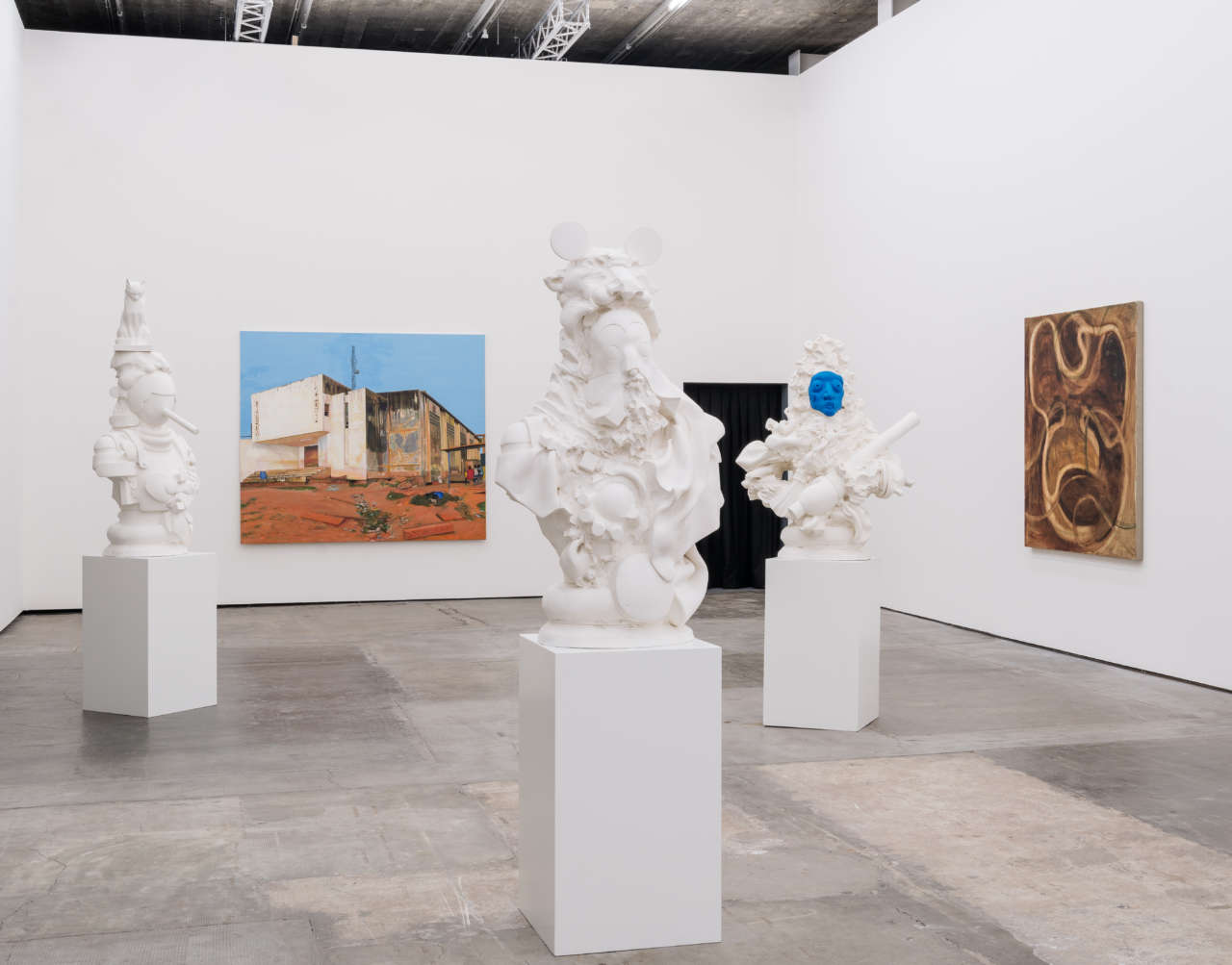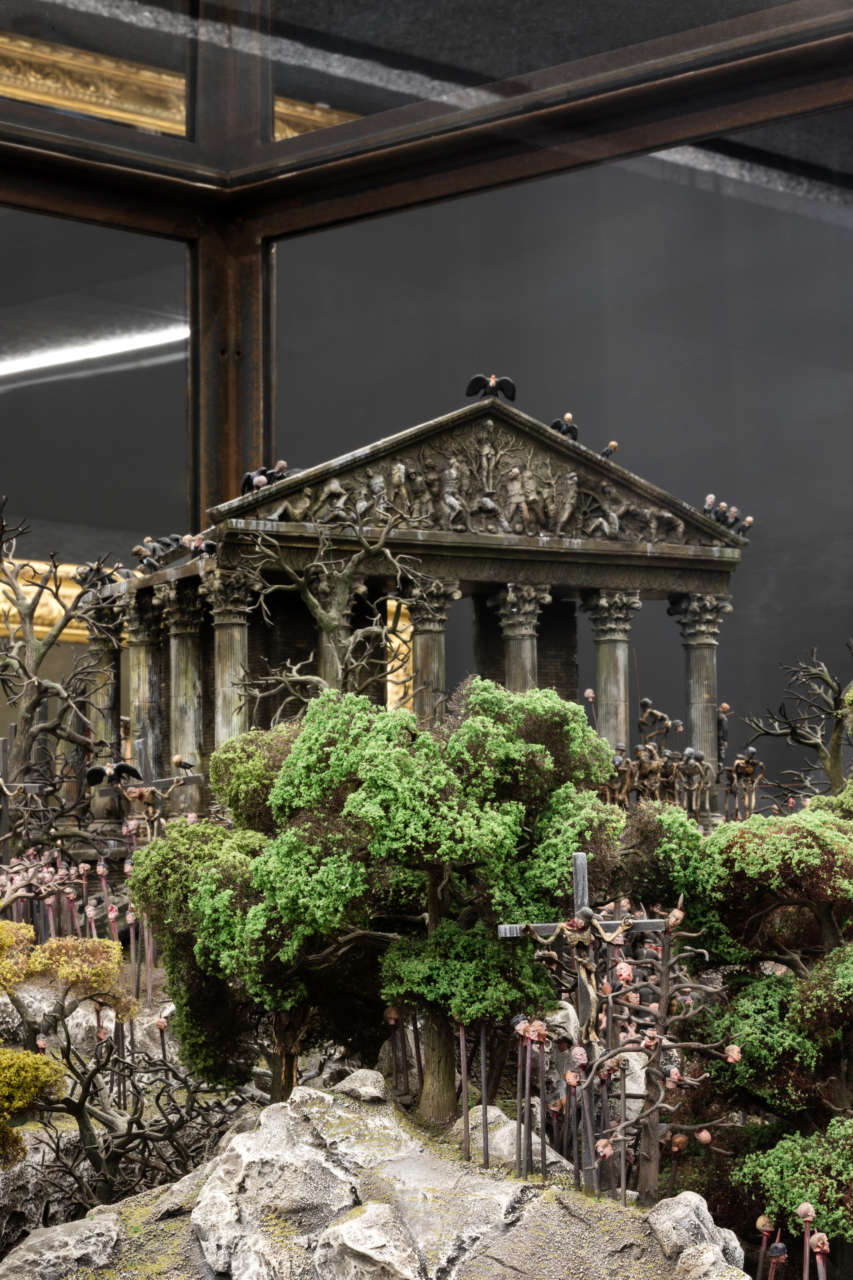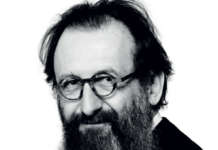location: Fondazione Prada - Milano
year: 2019
“Sanguine. Luc Tuymans on Baroque” will be on show at the Milan branch of the Fondazione Prada until the 25th of February. Organised in collaboration with MHKA (Museo d’Arte Contemporanea di Anversa), KMSKA (Museo Reale di Belle Arti di Anversa) and the city of Anversa, the project was introduced in Milan as a newer and bigger version of the first presentation, which took place in the Belgium city from June to September of 2018. Luc Tuymans, the curator of the exhibition, conceived an intense visual experience composed of more than 80 works created by 63 international artists, of which more than 25 are exclusively exhibited at the Fondazione Prada.

Courtesy Fondazione Prada
“Sanguine” is a personal reading of the Baroque, composed of original combinations and unexpected associations of contemporary artists and works from the masters of the past. Without following a rigid chronological order or a strictly historiographical criterion, Tuymans invites us to reread both the art of the Seventeenth century and that contemporary to us, putting the figure of the artists and his role in society at the centre. Following Walter Benjamin’s lesson, according to which the Baroque signalled the beginning of modernity, Tuymans investigates the search for authenticity, the political value of artistic representation, the disturbance induced by art, the exaltation of the author's personality and the international dimension of artistic production in this exhibition, recognizing the privileged interlocutor of today's art in Baroque.

Courtesy Fondazione Prada
The title of the exhibition – a word which evokes the colour of blood, violent temperament, and one which is rich in vitality, but also a pictorial technique – suggests the multiplicity of perspectives with which we can interpret the exposed works, in which live violence and simulation, cruelty and theatricality, realism and exaggeration, disgust and splendour, terror and ecstasy.

Courtesy Fondazione Prada
Ideas of corporality and physicality, as well as decomposition and hyper reality prevail in the displayed works. This is yielded through different expressive means: from painting to sculpture, photography to drawing, and installations to video. Works with a strong visual and emotional impact on visitors are presented, such as Fucking Hell (2008) by Jake and Dinos Chapman, in which sixty thousand toy soldiers, who practice or suffer violence in large glass cases, embody the grotesque aspect of terror. Another example would be Nosferatu [The Undead] (2018), which is a video installation by Javier Téllez that explores cinematographic memory and the condition of loneliness in mental illness sufferers. The lithographic series Thanatophanies (1955-95) by On Kawara, which presents the deformed faces of the victims of the nuclear bombs dropped on Hiroshima and Nagasaki, expresses the human reaction of horror towards war. This forewarns us of the severed head of Golia, to which Caravaggio lends his own face, and the pale sleeping boy depicted in Sleeper (2007-08) by Michaël Borremans. The macabre vulnerability of the victims who we can observe in Peter Paul Rubens Compianto sul Cristo morto [Lamentation over the Dead Christ] (1614) is also the central theme of Berlinde De Bruyckere’s installation Flanders Fields (2000) and Marlene Dumas’ painting Dead Girl (2002).
Fragility and monumentality come together in the sculpture Il giorno mi pesa sulla notte I [The Day Weighs upon My Night], made by Luciano Fabro in marble, gold, lead, and glass, and in the installation Room with Unfired Clay Figures (2011-15) by Mark Manders, as well as in the works by Cheikh Ndiaye and Diego Macron. The features of the exhibition such as surplus and kitsch found in the wooden sculptures made in 1758 by Johann Georg Pinsel can also been seen in the works of artists like Jacques-André Boiffard, Roberto Cuoghi, Kerry James Marshall and Takashi Murakami. The beauty of the form, which hides dramatic or intimate subjects, is explored in the works of John Armleder, Lili Dujourie and Giuseppe Gabellone. This feature is already evident in the sensuality of the dying Cleopatra painted in the first half of the 17th century by Guido Cagnacci. The dynamism of the depicted forms and the coexistence of comedy and tragedy in the same scene can be seen in the work Trionfo di Davide [The Triumph of David] (1659) by Andrea Vaccaro as well as in the painting When the Going is Smooth and Good (2017) by Njideka Akunyili Crosby.
Contatti stampa
Fondazione Prada
T +39 02 56 66 26 34
press@fondazioneprada.org
Nicolò Scialanga
nicolo.scialanga@fondazioneprada.org
fondazioneprada.org
Orari / Giorni di apertura
lunedì / mercoledì / giovedì, 10 - 19
venerdì / sabato / domenica, 10 - 21
Chiuso il martedì.
La Haunted House rimane aperta fino alle 18.
Il Servizio Visitatori è attivo tutti i giorni, dalle 10 alle 18.
BIGLIETTI
PROGETTI PERMANENTI E TEMPORANEI
Intero - 15 € / Ridotto - 12 €
SOLO PROGETTI PERMANENTI
Intero - 10 € / Ridotto - 8 €
SOLO PROGETTI TEMPORANEI
Intero - 10 € / Ridotto - 8 €
RIDUZIONI
Studenti fino ai 26 anni
Possessori tessera FAI
Accompagnatori visitatori con disabilità
Gruppi 15-25 persone
GRATUITO
Visitatori sotto i 18 e sopra i 65 anni
Visitatori con disabilità
Giornalisti accreditati o in possesso di tessera stampa in corso di validità







